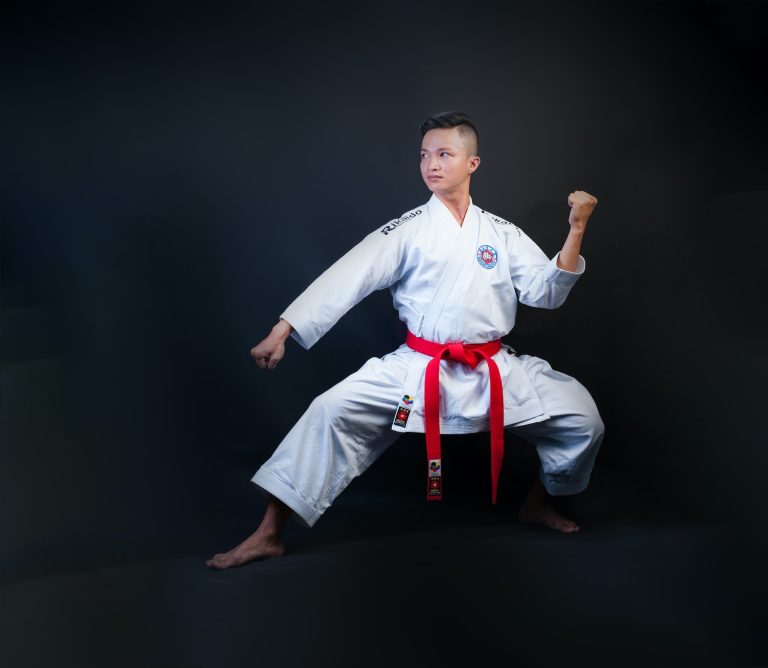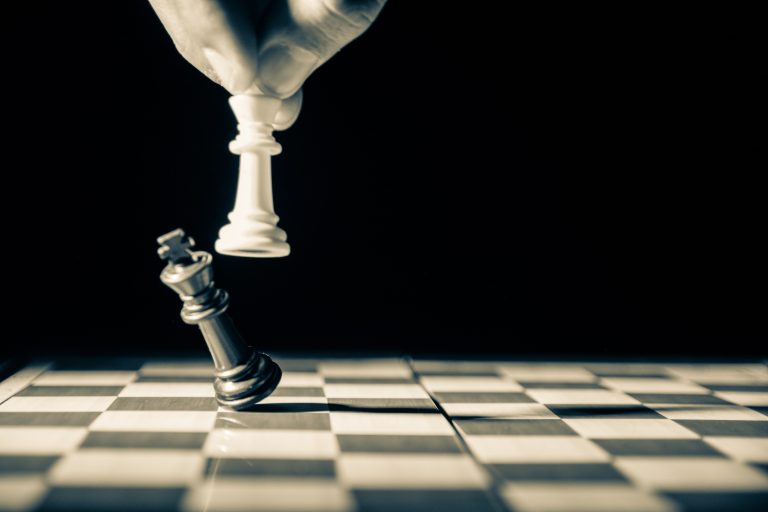Karate: Ein Umfassender Überblick
Karate ist eine jahrtausendalte asiatische Kampfkunst, die sich durch harte und intensive Arbeit zu einer der beliebtesten Kampfkünste der Welt entwickelt hat. Seine Wurzeln reichen bis in die alten Tage des Okinawan Karate zurück, als die Kunst noch von Samurai-Kriegern ausgeübt wurde. Heute ist Karate eine beliebte Sportart, die sowohl für den Wettkampf als auch für den freizeitlichen Gebrauch ausgeübt wird.
In diesem Blog-Beitrag möchte ich einen umfassenden Überblick über Karate geben, von den Grundlagen der Kunst bis hin zu den verschiedenen Stilen und Techniken. Ich werde auch einen Blick auf die Entwicklung der Kunst in den letzten Jahren werfen, einschließlich der weltweiten Expansion des Karate und der neuen Entwicklungen im Wettkampf.
Geschichte des Karate
Karate hat seinen Ursprung auf dem japanischen Okinawan-Archipel, wo sein Name „Okinawan Karate“ bedeutet. Okinawan Karate ist eine Kombination verschiedener Kampfstile, die durch die Samurai-Krieger der japanischen Provinzen entwickelt wurde. Es ist eine Kampfkunst, die sich auf Schläge, Stöße und Tritte konzentriert.
Im 19. Jahrhundert brachten chinesische Einwanderer traditionelle chinesische Kampfkünste in die Region, was zu einer weiteren Vermischung verschiedener Kampfstile führte. Diese Form des Karate wurde als „Shorin-Ryu“ bekannt und hatte viele Einflüsse auf das Okinawan Karate, insbesondere im Bereich der Fußtechniken.
Im 20. Jahrhundert begann das Okinawan Karate, sich auf andere japanische Inseln und schließlich auf das japanische Festland zu verbreiten. Es war hier, dass es von dem legendären Meister Gichin Funakoshi als „Shotokan Karate“ bekannt wurde. Funakoshi modernisierte die Kunst und machte sie für den Wettkampf und das allgemeine Training geeignet. Seine Schule des Shotokan Karate ist noch heute eine der beliebtesten Karatestile.
Stile und Techniken des Karate
Karate ist in verschiedene Stile und Techniken unterteilt. Diese Unterscheidungen basieren sowohl auf der Ursprungskunst als auch auf den modernen Entwicklungen des Karate.
Der erste Stil ist das Shotokan Karate, das von dem legendären Meister Gichin Funakoshi entwickelt wurde. Es konzentriert sich auf kraftvolle und gerade Linien mit starker Balance und Kontrolle. Der Fokus liegt auf dem Training der Kraft, Ausdauer und Technik, sowie auf dem Verständnis der Kampfkunst als Ganzes.
Ein weiterer beliebter Stil ist das Kyokushin Karate, das von dem legendären Meister Masutatsu Oyama entwickelt wurde. Es ist eine Kombination aus traditionellen und modernen Techniken, mit einem starken Fokus auf Krafttraining und Konditionierung. Der Fokus liegt auf dem Wettkampf mit der Absicht, den Gegner zu besiegen oder zu verletzen.
Eine weitere beliebte Variante des Karate ist das Wado-Ryu Karate. Dieser Stil wurde von Hironori Otsuka entwickelt und basiert auf seinem Studium des Judo und Aikido. Der Fokus liegt hier auf dem Einsatz von Ablenkungs- und Kontrolltechniken, um den Gegner zu überwältigen, ohne ihn zu verletzen.
Karate verfügt über eine breite Palette an Techniken. Zu den häufigsten Techniken zählen Schläge, Stöße und Tritte, aber es gibt auch Aikido-Techniken wie Ablenkungs- und Kontrolltechniken, sowie Widrigkeitskontrolle und Takedowns.
Karate im Wettkampf
Karate ist eine populäre Sportart im Wettkampf und hat in den letzten Jahren eine weltweite Expansion erlebt. Es gibt verschiedene Arten von Wettkämpfen, darunter Freikampf-Wettkämpfe, Formenwettkämpfe und Kraftwettkämpfe.
Der Freikampf ist die häufigste Art des Wettkampfs und besteht aus einem Kampf zwischen zwei Kämpfern, bei dem es keine festgelegten Regeln gibt. Die Kämpfer müssen versuchen, den Gegner durch Schläge, Tritte und andere Techniken zu überwältigen oder zu besiegen.
Eine weitere beliebte Form des Wettkampfs ist der Formenwettkampf oder „Kata“. In einem Kata-Wettkampf muss der Kämpfer eine vorgegebene Folge von Bewegungen präzise und kontrolliert vorführen.
Schließlich gibt es noch Kraftwettkämpfe, bei denen es um Kraftdemonstrationen geht. Beim Kraftwettkampf muss der Kämpfer seine Kraft unter Beweis stellen, indem er schwere Gewichte hebt oder sehr schwere Holzstangen bricht.
Fazit
Karate ist eine jahrtausendalte asiatische Kampfkunst mit vielen unterschiedlichen Stilen und Techniken. Es hat sich von seinen traditionellen Wurzeln zu einer weltweit beliebten Sportart entwickelt, die sowohl für den Wettkampf als auch für den freizeitlichen Gebrauch ausgeübt wird.
Es gibt verschiedene Arten des Wettkampfs, darunter Freikampf, Formenwettkampf und Kraftwettkampf. Jeder Stil verwendet andere Techniken, aber alle teilen dieselbe Grundphilosophie: Verletze deinen Gegner nicht und respektiere deine Gegner in jeder Situation.
Karate hat sich im Laufe der Jahre entwickelt und erfreut sich heute weltweiter Beliebtheit. Es gibt viele Möglichkeiten, es zu lernen und seine Fertigkeiten zu verbessern, aber am Ende liegt es an jedem Einzelnen, ob er diese alte Kampfkunst als Hobby oder als Lebensweise betrachtet.
Karate: Ein Umfassender Überblick – The most frequently asked questions answered
Karate is a form of martial arts that originated in Okinawa, Japan. It is a popular martial art that focuses on self-defense, physical fitness, and mental discipline. As a beginner, it is natural to have questions about karate. In this post, we have compiled the most frequently asked questions about karate, with answers that will help you get started on your journey.
1. What is Karate?
Karate is a martial art that originated in Okinawa, Japan, in the late 1800s. It is a form of unarmed combat that uses punches, kicks, and strikes. Karate practitioners learn a range of techniques that are designed to provide them with self-defense skills. In addition to physical training, karate also emphasizes mental training, discipline, and respect for others.
2. What are the benefits of practicing Karate?
There are numerous benefits to practicing karate. Some of the most significant benefits are:
– Improved fitness: Karate is a physically demanding martial art, and practitioners can expect to see improvements in their strength, flexibility, and cardiovascular fitness.
– Self-defense skills: Karate is an effective form of self-defense, and practitioners learn techniques that can be used to protect themselves in dangerous situations.
– Discipline: Karate requires a high degree of mental discipline, and practitioners learn to be patient, focused, and resilient.
– Stress relief: Practicing karate can be a great way to relieve stress and reduce tension.
3. Can anyone practice Karate?
Yes, karate is a martial art that can be practiced by anyone regardless of age, gender, or physical ability. Many karate classes are tailored to specific age groups or skill levels, so it is important to find a class that is suitable for you.
4. What do I need to get started with Karate?
To get started with karate, you will need comfortable, loose-fitting clothing, such as a karate gi. You may also need a belt to indicate your rank. It is important to speak with your instructor about any other equipment that may be required for your specific class.
5. How long does it take to become proficient in Karate?
The time it takes to become proficient in karate depends on several factors, including the amount of time you devote to training and your natural aptitude for the martial art. However, it typically takes several years of consistent practice to become proficient in karate.
6. How do I find a Karate class?
There are many ways to find a karate class in your area. You can search online for local classes or ask for recommendations from friends or family members. It is important to research different classes and instructors to find one that is a good fit for you.
7. Can I practice Karate at home?
It is possible to practice karate at home, but it is recommended that you do so under the guidance of a qualified instructor. Practicing on your own can lead to bad habits and poor technique, which can be difficult to correct later on.
8. What should I expect in a Karate class?
In a karate class, you can expect to engage in physical training, including stretching, conditioning, and technique drills. You may also practice kata and sparring with other students. In addition to physical training, karate classes typically include mental training, with an emphasis on discipline, respect, and focus.
9. Is Karate a competitive sport?
Yes, karate is a recognized competitive sport that is practiced around the world. Competitive karate involves both sparring and kata competitions.
10. Can I learn Karate for self-defense purposes?
Yes, karate is an effective form of self-defense, and many people choose to learn it for this reason. In addition to physical techniques, karate also emphasizes mental training, which can help practitioners stay calm and focused in dangerous situations.
Conclusion
Karate is a fascinating martial art with a rich history and many benefits. As a beginner, it is normal to have questions about karate. We hope that this post has helped to answer some of the most frequently asked questions and provided you with some guidance on how to get started with this exciting martial art. Remember, becoming proficient in karate takes time and dedication, but the rewards are well worth it.
Inhaltsverzeichnis






